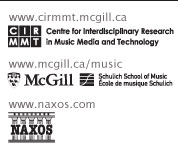DESCRIPTION
Keyboardist/musicologist , record producer , and virtual acoustics architect have joined forces to apply VIRTUAL ACOUSTICS for the first time to a commercial recording of this magnitude: a complete recording of Haydn’s works for solo keyboard. More than fourteen hours of music are performed in nine “virtual rooms.” These are actual rooms where Haydn or a typical player of his keyboard music would have performed. They have been acoustically sampled, electronically mapped, then precisely recreated in the recording studio. Featured rooms range from the most private to the most public, from Haydn’s own study in his Eisenstadt home to the Holywell Music Room in Oxford, England.
Further enhancing this unique experience of the Haydn repertoire are the seven historical keyboards on which the music is performed. All seven instruments, from a 1760s clavichord to a 1798 English grand piano, were built for this project by today’s leading artisans. Three of these—a 1755 harpsichord with an idiomatic “Viennese short octave,” a 1788 Tafelklavier, and a 1780 fortepiano with an early-Viennese stoss-action—are world premieres. Modern audiences can now hear these instruments again in the acoustical environments for which they were originally designed.
For Haydn’s “Six Prince Esterházy Sonatas” (1774), for example, the team sampled and mapped the acoustics of Eszterháza Castle’s Ceremonial Room, where Haydn would have presented his patron with a copy of the published sonatas. Back in the laboratories of the Centre for Interdisciplinary Research in Music Media and Technology of the Schulich School of Music at McGill University (Montreal, Canada), enveloped in a “sphere” of twenty-four loudspeakers, Tom Beghin performs these sonatas on a fresh-from-the-workshop French double manual harpsichord as if he is “in” the Ceremonial Room and as if we are sitting in the Prince’s own chair. By contrast, we experience Haydn’s sonatas for Princess Marie Esterházy, played on a Kober square piano, in the intimate setting of a Prunkraum of Vienna’s Albertina. Or we embrace the more public eighteenth-century concert experience of the acoustically accurate yet virtual English concert hall for a performance on a Longman, Clementi & Co. piano of the two concert sonatas that Haydn wrote for the celebrated Theresa Jansen.
Musicking happens through instruments, in rooms, by people. No repertoire celebrates this experience more than Haydn’s keyboard works. This revolutionary recording project stands as a tribute to the timeless appeal of a composer whose life and career revolved around similarly experimental interactions with technologies and audiences.
